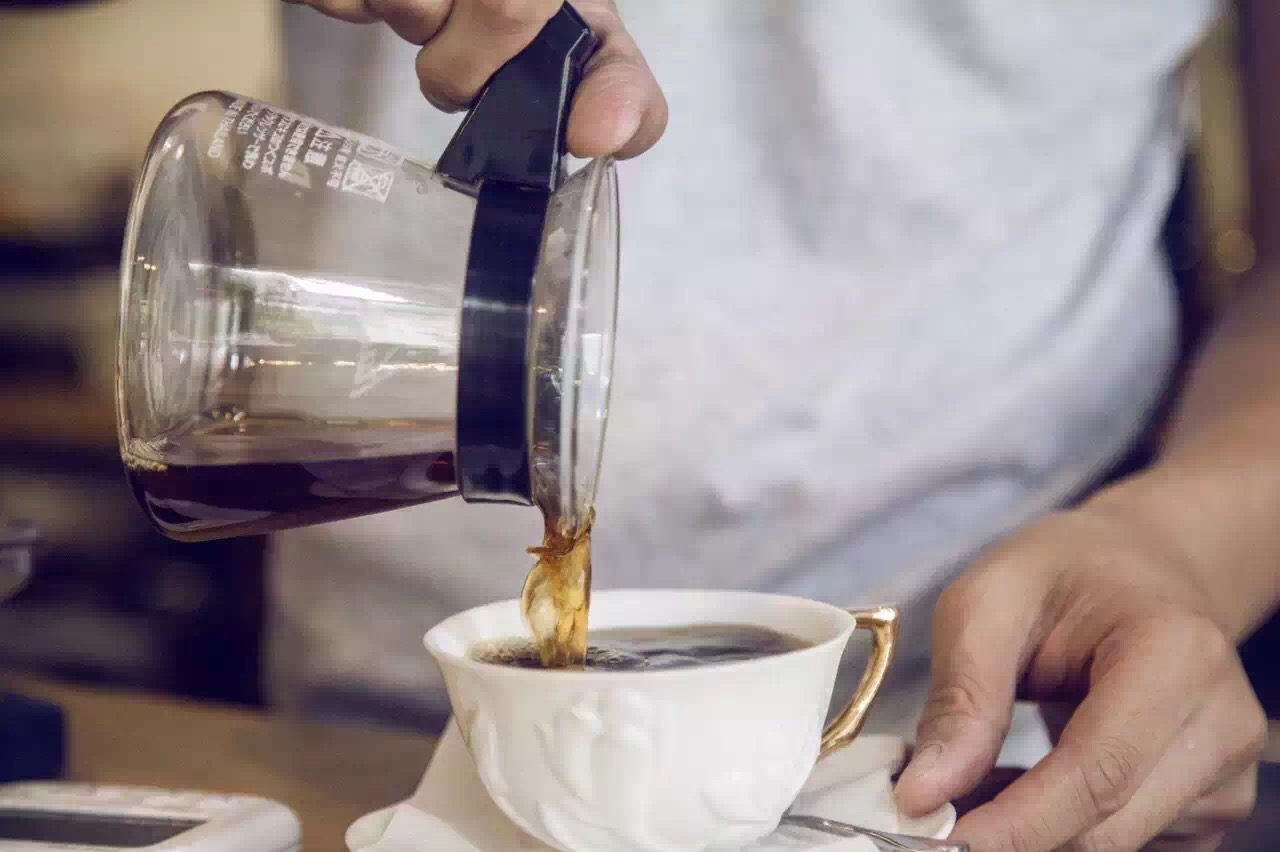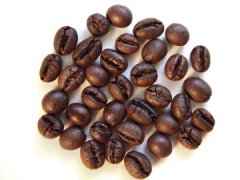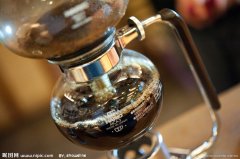Four essentials for making a good cup of coffee the choice of coffee machine

Let's take the most popular espresso as an example to explain the essentials of making espresso in detail. There are four elements to make a good cup of coffee: the choice of coffee maker, the quality of coffee beans, human factors, changes in the environment, all of which are indispensable.
The choice of coffee maker
1. Boiler capacity: if the boiler capacity is large, the effluent temperature is stable and the coffee quality is stable.
two。 Coffee machine temperature: whether it remains stable or not also affects the quality of coffee.
3. Atmospheric pressure: it is ideal to make coffee with nine air pressure values.
4. Effluent temperature: the international standard coffee machine effluent temperature is 90 °C, which should also be adjusted according to the roasting degree of coffee beans. If the roasting degree of coffee beans is deeper, the effluent temperature of the coffee machine will be reduced, otherwise the extracted coffee is easy to have scorched and bitter taste. The SPR used in the store is suitable for production with effluent temperature from 90 °C to 91 °C.
Note: the effluent temperature of coffee production refers to the outlet temperature of the machine head, which is different from the direct hot water output temperature of the boiler.
The choice of coffee beans
1. The main characteristics of Arabica (also known as Gaoshan bean):
The fragrant smell is strong.
It's not easy to taste bitter.
Creama (coffee oil) content is moderate
High acidity
The caffeine content is 30% of Robusta and 40% of it.
2. The main features of Robusta:
The aroma is poor
It is easy to taste bitter after deep baking.
More Creama
Low acidity
It's high in caffeine.
Preservation of coffee beans
1. Unopened coffee beans:
Suitable for storage in a cool, well-ventilated environment, the temperature is suitable for 18 °C-22 °C. Try not to put it in a dry place (the humidity is too dry below 54%), so its storage environment is similar to that of red wine.
two。 Opened coffee beans:
When the coffee bean comes into contact with the air, its flavor begins to lose, while the area of a complete coffee bean in contact with the air is limited, but the coffee bean forms a powder after grinding, and countless noodles come into contact with the air, which speeds up the loss of flavor. Therefore, when making coffee, grind and use it as much as possible, so as to ensure the quality of each cup of coffee. As for the preservation of open coffee beans, it is suitable for sealed preservation, but do not put them in a too humid environment, because coffee beans are afraid of moisture, and the oil of coffee beans is easy to lose, and the flavor will become worse.
Key points for preservation of coffee beans:
Whether the coffee beans are opened or not, they are afraid that the environmental humidity is too high.
Coffee beans, whether opened or not, their preservation environment can not be mixed, especially not suitable for storage in the refrigerator.
After the coffee beans are opened, as long as the packaging is sealed correctly, it can be accepted for use within three days (the longest is no more than five days), but also pay attention to the preservation environment.
Ground coffee beans are best used immediately.
Human factors
1. Base espresso:
Barista (barista) should know how to use espresso, because as long as espresso is made perfectly, other fancy coffee is easy to ensure its quality, so espresso is the foundation of Italian coffee; so if you want to master espresso, you must first learn how to drink and taste espresso.
two。 Be familiar with machines:
Barista must have a considerable degree of coffee professional knowledge and professionalism, and must have a considerable understanding of the coffee machine used. Only if you can skillfully master the performance of the machine can you make a good cup of coffee.
3. Professional production skills:
Only through professional training and continuous practice can correct and skilled skills be achieved, so that the quality of each cup of coffee can be guaranteed.
4. Extraction time of espresso:
A cup of 25cc to 30cc espresso, the standard extraction time is 25 seconds, but it is also considered a reasonable extraction time in the range of 22 seconds to 28 seconds, so that the quality of coffee can be controlled.
5. The factors affecting the extraction time of espresso:
Selection of coffee beans and adjustment of grinding thickness: theoretically, deep roasted beans are thicker and medium roasted beans are finer, so adjusting the grinding thickness of coffee beans is one of the important factors.
The standard of coffee powder: generally speaking, the amount of powder used in each cup of Singer espresso is 7g to 9g, which depends on the flavor orientation of coffee and the preference of consumers to determine the concentration of extracted espresso.
Pressing powder: the pressure of filling coffee powder in the handle of the coffee machine must be very accurate. It is necessary to fill the coffee powder to the most solid degree before you can card the handle on the head of the machine and extract espresso. It is more correct to fill and press 3 to 4 times with appropriate pressure and rotation left and right.
Changes in the environment
1. Changes in temperature:
The higher the external temperature, the finer the coffee beans are ground; otherwise, the coffee beans are ground coarsely. Generally speaking, the environment for coffee production is 18 to 23 degrees.
two。 Changes in humidity:
The higher the humidity, the thicker the coffee beans are ground. Compared with temperature and humidity, coffee production is mainly affected by ambient temperature.
3. Water quality requirements:
Generally speaking, 70ppm (the proportion of minerals in water) is soft water below, and hard water above 70ppm. The higher the mineral content in the water, the heavier the miscellaneous smell of coffee, so it is recommended to use 60ppm to 140ppm water quality to ensure that the coffee is mellow.
Important Notice :
前街咖啡 FrontStreet Coffee has moved to new addredd:
FrontStreet Coffee Address: 315,Donghua East Road,GuangZhou
Tel:020 38364473
- Prev

Hand-brewed coffee is a favorite extraction method in Japan.
Hand-brewed coffee is a method invented by a German, and now coffee pot filter paper is sold everywhere in supermarkets, which is the brand founded by the German at that time. The way to brew coffee by hand is simply to grind the coffee and put it in a funnel and pour hot water on it. Due to the gravity of the earth, the coffee will flow out from the bottom. In fact, most of the coffee on the market
- Next

How to make a good cup of coffee with a follicle?
Making a good cup of coffee is the quickest way to taste good coffee without too much trouble and no extra utensils, but there are still some things to pay attention to. Cleaning your coffee pot if you want to make a good cup of coffee, the most important and easily overlooked thing is the cleaning of the coffee pot, so you should wash it well with hot water first, and you'd better brush each carefully with a kettle brush.
Related
- Detailed explanation of Jadeite planting Land in Panamanian Jadeite Manor introduction to the grading system of Jadeite competitive bidding, Red bid, Green bid and Rose Summer
- Story of Coffee planting in Brenka region of Costa Rica Stonehenge Manor anaerobic heavy honey treatment of flavor mouth
- What's on the barrel of Blue Mountain Coffee beans?
- Can American coffee also pull flowers? How to use hot American style to pull out a good-looking pattern?
- Can you make a cold extract with coffee beans? What is the right proportion for cold-extracted coffee formula?
- Indonesian PWN Gold Mandrine Coffee Origin Features Flavor How to Chong? Mandolin coffee is American.
- A brief introduction to the flavor characteristics of Brazilian yellow bourbon coffee beans
- What is the effect of different water quality on the flavor of cold-extracted coffee? What kind of water is best for brewing coffee?
- Why do you think of Rose Summer whenever you mention Panamanian coffee?
- Introduction to the characteristics of authentic blue mountain coffee bean producing areas? What is the CIB Coffee Authority in Jamaica?

